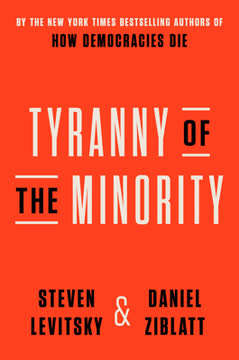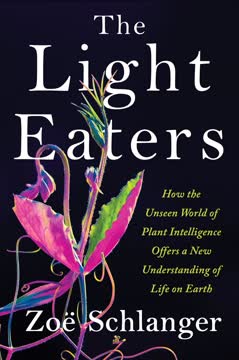Key Takeaways
1. The Pete Fields Murder: A Tragic Intersection of Race, Poverty, and Justice
Early on the summer evening of August 1, 2006, on a mournful New Haven side street, an elderly man from another town who'd just cashed checks worth nearly $2,000 was sitting in his cream-colored luxury car. A young stranger appeared at his window and killed the man with a single, point-blank gunshot to the neck from a .45 caliber pistol.
The incident's significance: The murder of Pete Fields, a Black man who had risen from poverty in the South to a comfortable life in Connecticut, encapsulates the complex issues of race, poverty, and justice in urban America.
- Key elements of the case:
- Victim: Pete Fields, elderly Black man, former factory worker
- Location: West Ivy Street, Newhallville neighborhood, New Haven
- Perpetrators: Initially believed to be Bobby and Kwame, later evidence pointed to Major and BlackJack
- Weapon: .45 caliber pistol
The investigation and subsequent wrongful conviction of Bobby highlight the systemic issues in the criminal justice system, particularly its treatment of young Black men from poor neighborhoods. The case demonstrates how poverty, lack of legal representation, and coercive interrogation techniques can lead to false confessions and wrongful convictions.
2. Newhallville: A Microcosm of Urban Decay and Racial Segregation
For well over a century it was inhabited by waves of immigrants—Irish, Germans, Poles, Italians—who found nearby industrial jobs that paid for first houses, until each moved up and out, giving way, in turn, to the African Americans who arrived from the Carolinas and other Southern states during the later stages of the Great Migration.
A neighborhood in transition: Newhallville's history reflects the broader patterns of urban development, industrial decline, and racial segregation in American cities.
- Newhallville's evolution:
- Industrial boom: Home to Winchester factory workers
- White flight: European immigrants move to suburbs
- Great Migration: Influx of African Americans from the South
- Industrial decline: Loss of manufacturing jobs
- Urban decay: Poverty, crime, and neglect
The neighborhood's transformation from a thriving working-class area to a pocket of poverty illustrates the impact of deindustrialization and systemic racism on urban communities. Newhallville became a symbol of the "two Americas" – separated by race and class, yet geographically close.
3. Bobby's Journey: From Just Around Kid to Wrongfully Convicted
Bobby was sixteen years old, five-foot-six, with an induction buzzcut for summertime that emphasized protruding ears, dark skin, a trusting pre-adolescence in his eyes, Bobby was skilled at being watchful without seeming watchful, an alert, accurate close observer who saw blurry life with clarity, and remembered what he saw.
A child of Newhallville: Bobby's story exemplifies the challenges faced by young Black men growing up in impoverished urban neighborhoods.
- Key aspects of Bobby's life:
- Raised by a single mother with multiple siblings
- Took on parental responsibilities at a young age
- Struggled in school but showed potential
- Hung around the 2-4 corner store
- Falsely confessed to Pete Fields' murder under coercive interrogation
Bobby's wrongful conviction highlights the vulnerability of young people, especially those from disadvantaged backgrounds, in the criminal justice system. His journey from a "just around" kid to a prisoner serving a 38-year sentence underscores the systemic failures that disproportionately affect poor, Black communities.
4. The Great Migration's Legacy: Unresolved American History
The Great Migration of Black Southerners to the North is the largest population relocation by choice in American history. When it began, during World War I, 9 in 10 African Americans lived in the South. Six decades and 6 million transits later, in 1970, the distribution was nearly even.
A transformative movement: The Great Migration reshaped American demographics and culture, but its promise of a better life was often unfulfilled.
-
Motivations for migration:
- Escape from Jim Crow laws and racial violence
- Pursuit of economic opportunities in Northern factories
- Hope for better education and living conditions
-
Challenges faced by migrants:
- Continued racial discrimination in the North
- Segregation in housing and employment
- Deindustrialization and loss of manufacturing jobs
The story of the Fields family, who moved from South Carolina to New Haven, illustrates both the aspirations and the disappointments of the Great Migration. While they found some economic opportunities, they also encountered new forms of racism and economic instability.
5. The Winchester Factory: Rise and Fall of an Industrial Icon
Winchester became the world's biggest producer of guns and bullets, with thousands of employees and a terrible reputation among labor advocates.
Symbol of industrial boom and bust: The Winchester factory's history parallels the broader narrative of American manufacturing and its decline.
- Winchester's impact on Newhallville:
- Provided thousands of jobs, primarily to white workers initially
- Shaped the neighborhood's development and demographics
- Closure led to economic devastation and social upheaval
The factory's decline and eventual closure in 2006 marked the end of an era for Newhallville and New Haven. It left a vacuum of employment opportunities, contributing to the neighborhood's poverty and social problems. The loss of manufacturing jobs like those at Winchester is a key factor in understanding the challenges faced by urban communities like Newhallville.
6. Major: The Tragic Life of a Teenage Killer
Major was responsible for a lot of shootings," Ratti said. "But nobody'd tell on him because they were afraid of him or he was smart enough not to get involved in any evidence, until he robbed the old guy in the car.
A product of his environment: Major's story illustrates the devastating impact of poverty, trauma, and lack of opportunities on urban youth.
- Factors contributing to Major's violent path:
- Loss of his mother at a young age
- Exposure to violence and drug culture
- Lack of positive role models and support systems
- Easy access to firearms
Major's transformation from a promising student to a feared killer highlights the failures of society to protect and nurture vulnerable children. His death at age 17, shot multiple times on a city street, underscores the cyclical nature of violence in impoverished communities.
7. Prison Education: A Path to Personal Growth and Redemption
Bobby grew to like the bluesy, irreverent Irish singer Hozier, especially his song "Take Me to Church," an exuberant call to devotion at the altar of desire and acceptance. At night, in his bunk, Bobby overcame anxiety by rereading As a Man Thinketh. The book became like a blanket over a birdcage, his way of going to sleep. He read it through thirty times.
Education as transformation: Bobby's experience in prison demonstrates the potential for personal growth and intellectual development even in the most challenging circumstances.
- Bobby's educational journey in prison:
- Earned his GED
- Participated in a reading group discussing literature and social issues
- Developed new interests in music, philosophy, and history
- Improved his critical thinking and communication skills
The transformative power of education in prison settings highlights the importance of providing opportunities for learning and self-improvement to incarcerated individuals. Bobby's story shows how education can provide hope, purpose, and a sense of identity to those facing long sentences.
8. The Impact of Fatherlessness on Urban Youth
Almost everybody Bobby knew at prison was Black. Almost every son whose background Bobby knew at prison had no father in his life. Almost every father, so far as Bobby knew, wasn't married.
A cycle of absence: The prevalence of fatherlessness in urban Black communities has far-reaching consequences for children and society.
- Effects of fatherlessness:
- Increased risk of poverty
- Higher likelihood of behavioral problems
- Greater vulnerability to negative influences
- Emotional and psychological challenges
Bobby's own experience of growing up without a father, and his observations in prison, highlight the widespread nature of this issue. The absence of positive male role models contributes to the cycle of poverty, crime, and incarceration that affects many urban communities.
9. False Confessions: The Perils of Coercive Interrogation Techniques
Bobby was eighteen years old, five-foot-ten, 160 pounds, and still growing at the end of 2007, when he arrived at the Cheshire Correctional Institution, a high-security adult prison known to most current inmates as "Big Cheshire".
The power of pressure: Bobby's false confession to the Pete Fields murder illustrates the dangers of coercive interrogation techniques, especially when used on vulnerable young people.
- Factors contributing to false confessions:
- Youth and inexperience of the suspect
- Lengthy interrogations without legal representation
- Use of deception and psychological manipulation by investigators
- Promise of leniency in exchange for cooperation
Bobby's case highlights the need for reforms in interrogation practices, particularly for juvenile suspects. The ease with which a false confession can be obtained and the weight it carries in court proceedings underscore the importance of safeguards to protect the rights of the accused.
10. The Power of Mentorship and Community in Prison
Bobby did his best to reciprocate. During the hour when cell doors in the block were opened, Bobby knew Maaly would want to shower quickly so he'd have more telephone time with his wife. The problem was "the herd" surging to the showers. So, the door would pop and Bobby halfbacked it out of the cell, sprinting ahead to hold a shower for Maaly.
Finding humanity in confinement: Bobby's relationships with fellow inmates, particularly Maaly and Troy Westberry, demonstrate the potential for personal growth and support even in the harsh prison environment.
- Ways mentorship benefited Bobby:
- Encouraged his education and self-improvement
- Provided emotional support and guidance
- Helped him cope with the challenges of prison life
- Fostered a sense of community and belonging
The power of these relationships in Bobby's life underscores the importance of rehabilitation and community-building programs in prisons. These connections not only helped Bobby survive his wrongful incarceration but also contributed to his personal development and resilience.
Last updated:
Review Summary
The Other Side of Prospect is praised as a powerful, well-researched work of non-fiction that explores systemic racism, poverty, and injustice through the story of Bobby Johnson, wrongly convicted of murder. Readers commend Dawidoff's intimate portrayal of New Haven's Newhallville neighborhood and its residents, contrasting it with nearby Yale University. The book is lauded for its compelling narrative, detailed characters, and comprehensive examination of social issues. While some found certain sections long-winded, most reviewers consider it a must-read that provides deep insights into urban America's challenges.
Similar Books








Download PDF
Download EPUB
.epub digital book format is ideal for reading ebooks on phones, tablets, and e-readers.




